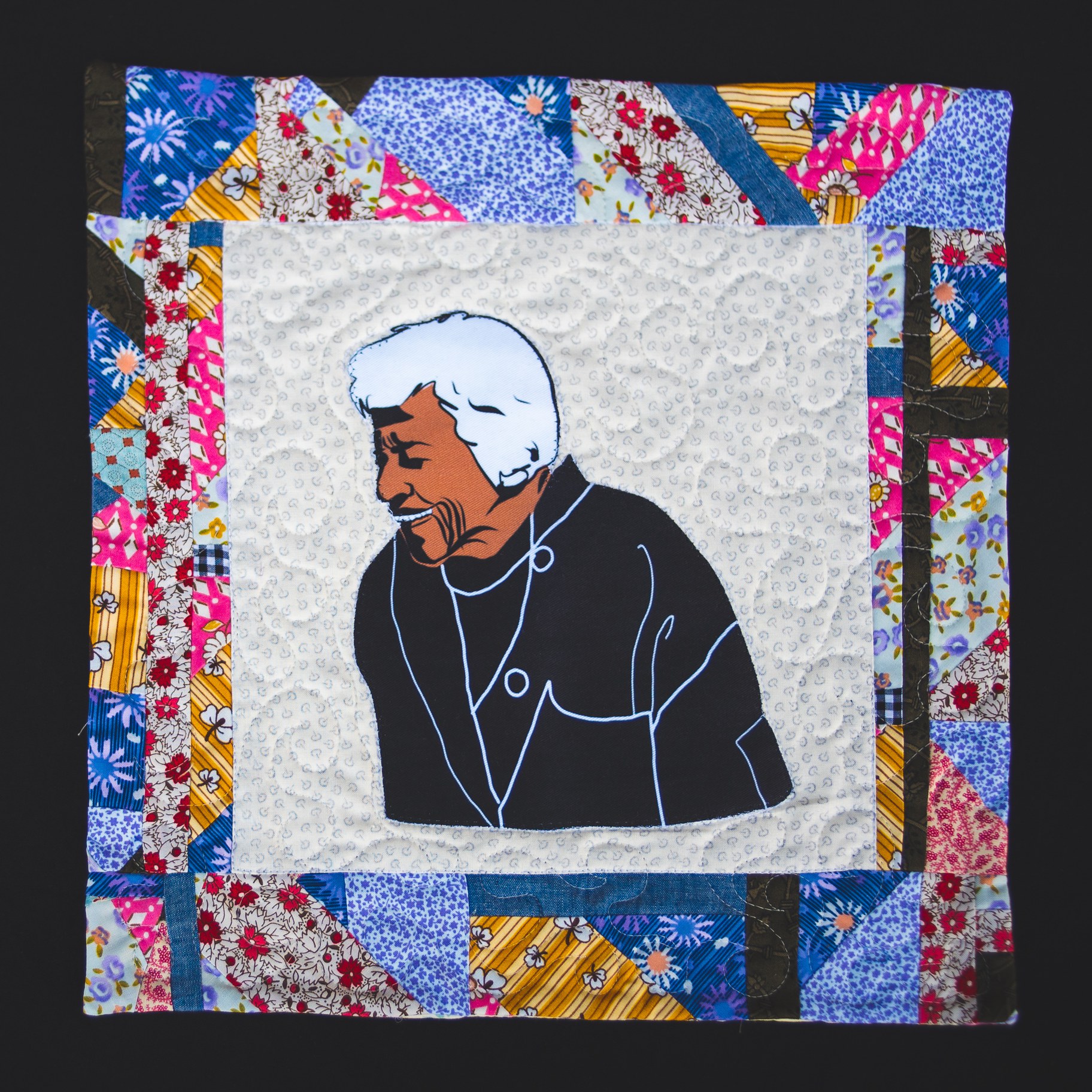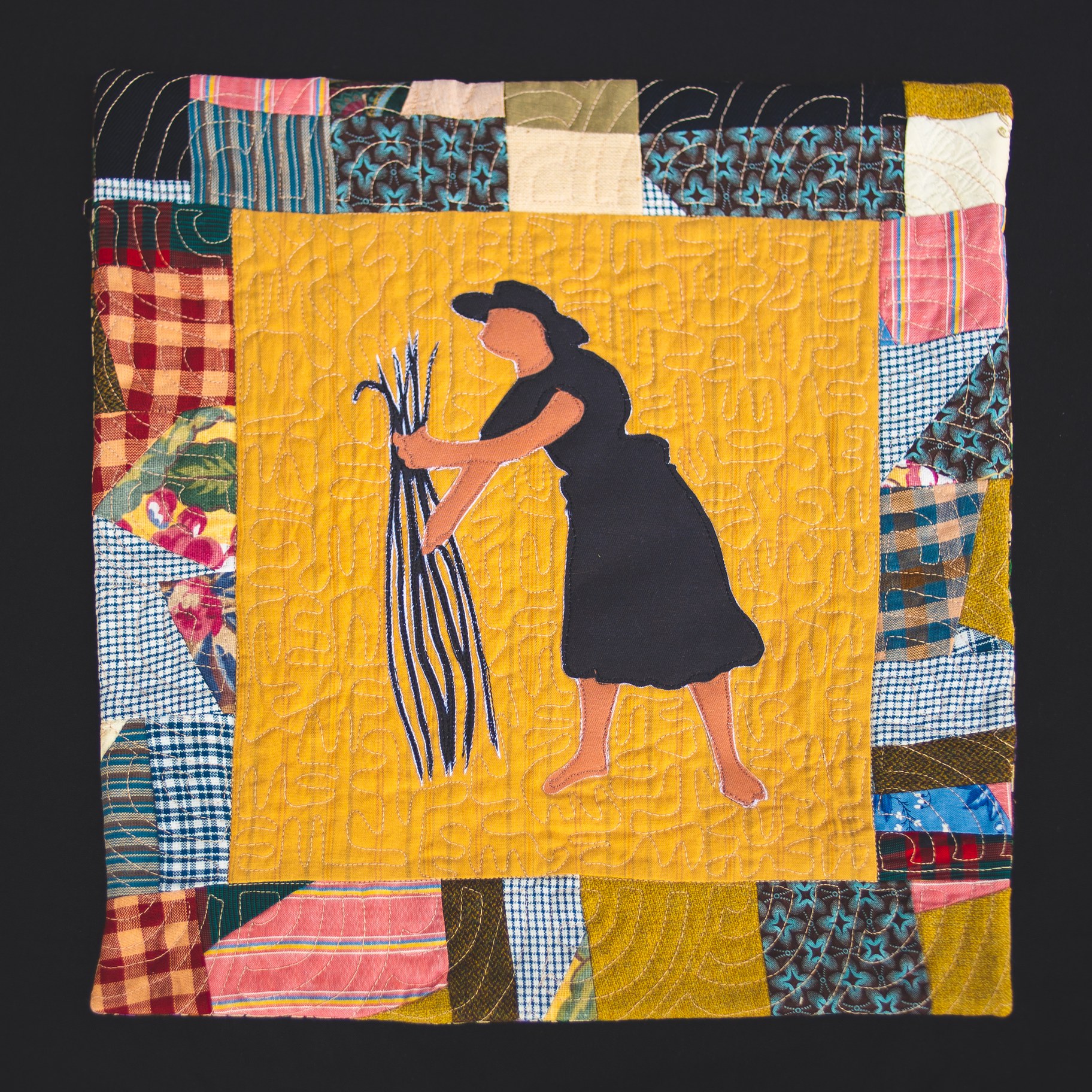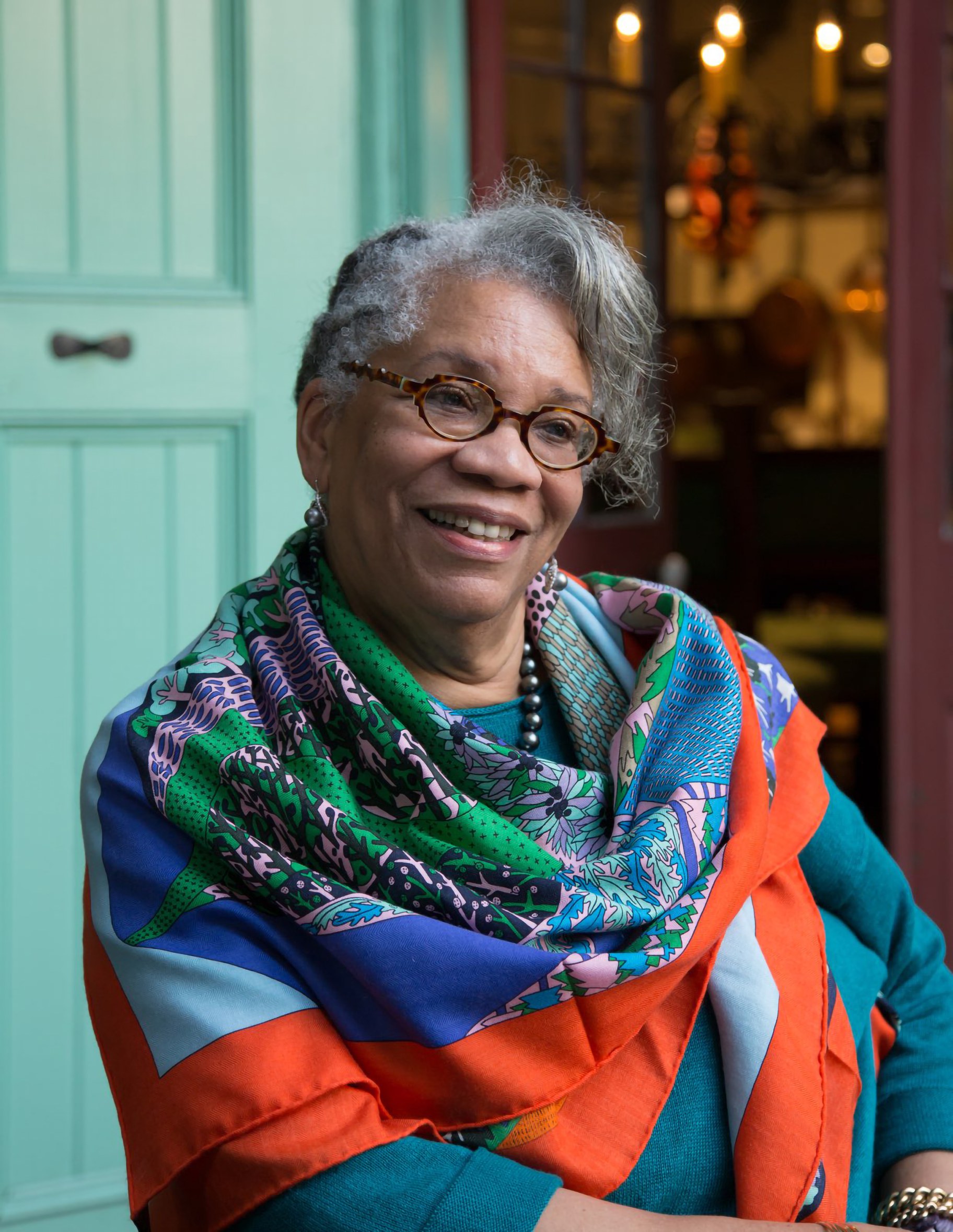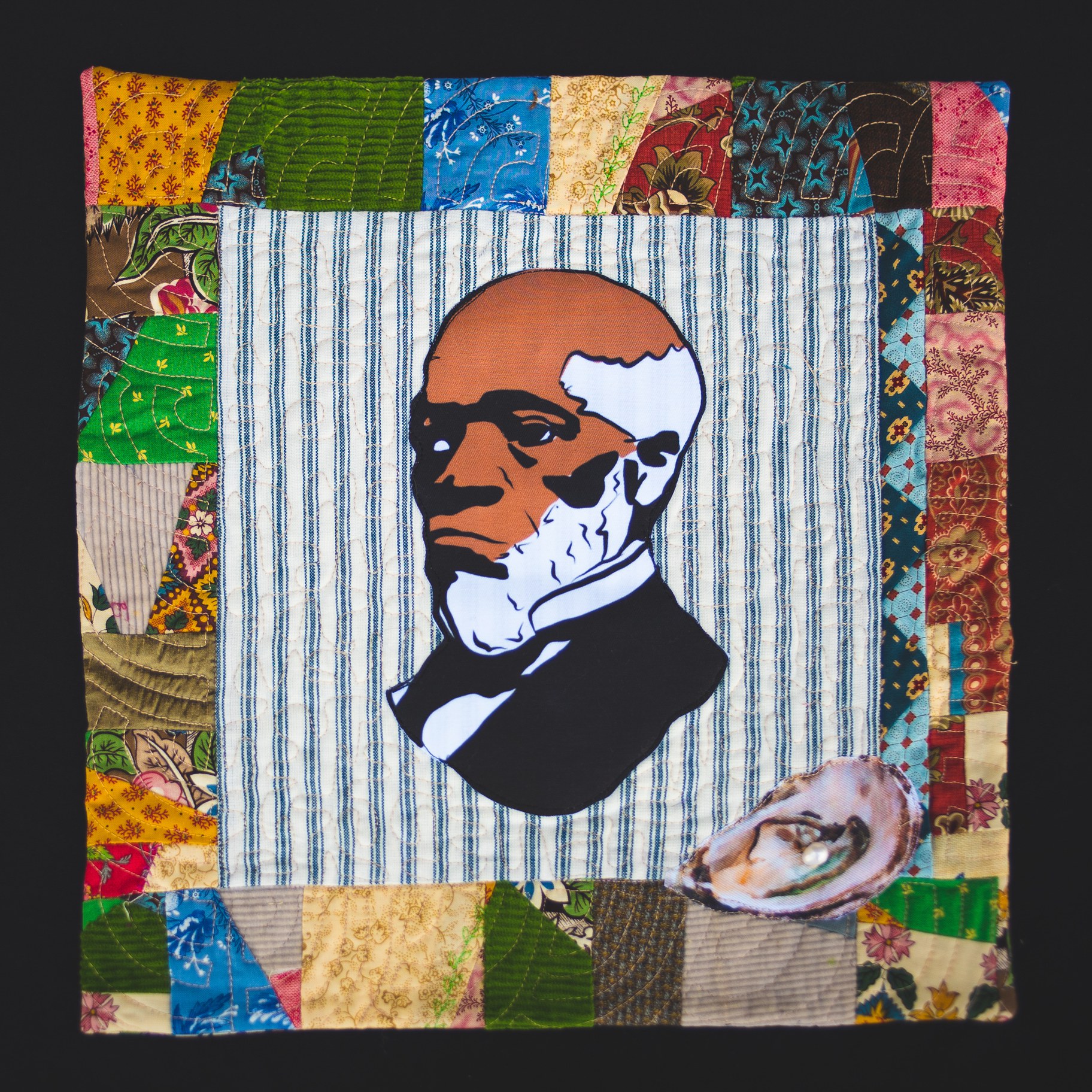Of the many methods to learn about culinary heritage, utilizing a quilt to convey to the tale of the African American foods and drink producers foundational to American delicacies is specially impressive.
Harlem Needle Arts is an arts and cultural business at the forefront of revolutionizing, preserving, and expanding the narrative of fiber textile style and needle arts in the African diaspora. They took the lead on making the Legacy Quilt, a narrative perform pieced with each other from time period fabrics, now on exhibit as aspect of the Museum of Foodstuff and Drink’s show “African/American: Generating the Nation’s Desk” in New York City.
The substantial quilt, which steps 14 feet tall and just about 30 ft vast, contains 466 quilt blocks. Just about every quilt block stands for an icon in the heritage of agriculture, commerce, and invention who represents the African/American working experience in foods and culinary arts, dating from 1619 onward.
“The strategy was to honor the first enslaved Africans who were being documented to have been introduced to the United States to Jamestown, Virginia,” states Harlem Needle Arts Executive Director Michelle Bishop. “So it was at first to commence to commemorate that specific anniversary, if you want to call it [that].”
Bishop joins us to go over the project’s inceptions and the tales and legacy woven into its cloth.
The pursuing interview has been edited for size and clarity.
KCRW: Who commissioned the project, and how did Harlem Needle Arts get included?
Michelle Bishop: We had been to begin with commissioned by the Museum of Foods and Consume. The eyesight of the venture was from the guide curator Dr. Jessica B. Harris, who conceived the overall concept of the exhibition [and] that this component of the story really should be informed in quilt. They have sort of an advisory board who selected who need to be associated and featured in the quilt. And then 1 of the administrators, Catherine Piccoli, attained out to us in July or August of 2019. And it experienced a several evolutions at the level when we came in.
How several quilters worked on the piece?
The core quilters have been Laura Gadson and Sylvia Hernandez, and then Ife Felix aided often.

As the chef-owner of Dooky Chase’s in New Orleans, Louisiana, Chase turned a sandwich store into an upscale cafe for Creole delicacies, immortalizing dishes like her gumbo z’herbes. Over seven a long time, diners involved leaders of the Civil Legal rights Motion, famous people, and U.S. presidents. Photograph courtesy of Museum of Food items and Drink.
Can you elaborate on the period of time-proper fabrics applied in the style?
Beginning from 1619 ahead, the sashing that’s about every quilt block or the backing of the appliquéd icon which is featured on the block had to be suitable to that time time period in history. And of that time interval, let us say it can be 1600, 1700, African Individuals were being not allowed to wear the same fabrics as the men and women who had been enslaving them. Generally, they ended up remaining to have on points that have been like a burlap, crocker, [or] muslin form of material. And then as time progressed, ginghams, flannels, so on and so forth.
What was the approach of the analysis that went into pinpointing how huge the quilt would be and who acquired placement on it?
The size of the quill, they mainly told us how they wanted it to be. We labored out the math and then gave them the true definitive size.
Who vetted the icons that designed it onto the blocks?
Dr. Jessica Harris … Catherine [Piccoli], Peter [J. Kim] who was the Government Director of MOFAD [at the time], they convened a board of advisors. So they did the investigation and chosen who ought to be integrated in the quilt. It consists of innovations, so you may well see objects that are aspect of the quilt block, like the ice cream scoop. What you happen to be on the lookout at in those instances are the primary patterns from the patent for that unique item.

Individuals from West Africa, wherever Oryza glaberrima (African crimson rice) is a indigenous crop, founded rice cultivation in the U.S. Lowcountry. These farmers and their descendants developed advanced agricultural devices which includes dams and discipline irrigation. Photograph courtesy of Museum of Foods and Consume.
Alexander P. Ashbourne and Alfred L. Cralle are represented on the quilt. How are their contributions depicted?
Mr. Cralle is the man or woman with the ice cream scoop. There ended up about 3 iterations of the ice cream scoop. In the beginning, one particular was in a cone form, and then a person was circular. And then there’s a lady who produced the piece in the ice product scoop that actually allowed for the shift of the ice cream out of the scoop. So there are about a few various individuals concerned.
Mr. Ashbourne did the spring-loaded biscuit cutter, and he gained the patent for it on November 30, 1875. In some scenarios, there ended up men and women who were enslaved or labored in environments wherever they explained, “We can do this differently. How can we create an apparatus to make our life easier?” So a lot of this arrived out of a necessity that they saw.
Can you describe a couple blocks that have exclusive resonance for you?
There is a block which functions two girls sitting down with buying luggage in entrance of them. And they are component of the category considered the Movement. In 1969, the Black Panther Occasion was the initial to institute or enact the totally free meals plans in universities, or in their educational institutions. And out of that motion, later on — I think it was in the 1970s — the United States govt set into spot a food program inside the college method. So that truly arrived out of the Black Panther motion.
The other is Shirley Sherrod, who worked with the Department of Agriculture, who experienced aided lots of farmers throughout this region acquire accessibility to funding, components, issues of that nature. She’s an advocate for farmers, and is however doing work with farmers across the country. [And] Reginald Lewis. In the ‘80s, Reginald Lewis was the particular person who bought Beatrice Foods. At that time in heritage, he was with us, all that he experienced completed, not only with the company of foodstuff, but for the neighborhood at large. So all those are some that ring out to me.

Historian Dr. Jessica B. Harris was lead curator of the show “African/American: Making the Nation’s Desk,” on see at the Museum of Food stuff and Consume by way of Juneteenth. Photo by Angie Mosier.
Can you communicate about the artwork variety of the quilt in the Black neighborhood and why you really feel it was decided on as this sort of a transferring way to converse?
The African American practical experience, and over and above, in quilting… the historical past, on a person hand, it was very utilitarian. It was a suggests of remaining heat. It was a suggests of saying, “Well, let us piece alongside one another what we have.” We deal with what is actually termed three layer quilting. So you can find a leading, you will find a center, and there is certainly a backing. So in periods exactly where they didn’t have the modern amenities that we have proper now, they would use newspaper to stuff quilts. They would use outdated clothing, just about anything that they could use to develop a covering. And as times developed, of course, you experienced gatherings of individuals earning quilts. And not only ladies. There have been men that have been a component of the development of creating quilts to explain to tales.
The tale in the quilt is … you’re the griot, carrying on the information. As we have on quilts from 1 technology, move them on from 1 to the subsequent, to the upcoming, you carry on to explain to the tale of what is taking place in the quilt. If you’re utilizing aged clothes, nicely, that may possibly have belonged to anyone who passed absent.
So as we notify this historic tale, there are 406 blocks, of which 400 of them have an icon. There are a great number of tales that haven’t even been integrated. This development of a quilt carries on generations of storytelling, generations of us getting griots, generations of us checking out who we had been in the cultural landscape of the place, and in this scenario, of program, of food items.

Lifted on Virginia’s jap shore by absolutely free, land-proudly owning mothers and fathers, Downing was recognised as the “Black Oyster King of New York.” His common Wide Avenue oyster property catered to affluent diners and was globe-renowned. The cellars of his restaurant had been a prevent on the Underground Railroad. Photograph courtesy of Museum of Foods and Consume.





More Stories
Fukuoka: The Japanese town that dominates street meals
Total Meals Current market Forecasts Top rated 10 Meals Developments for 2024
Total Food items Marketplace Forecasts Prime 10 Foodstuff Trends For 2024